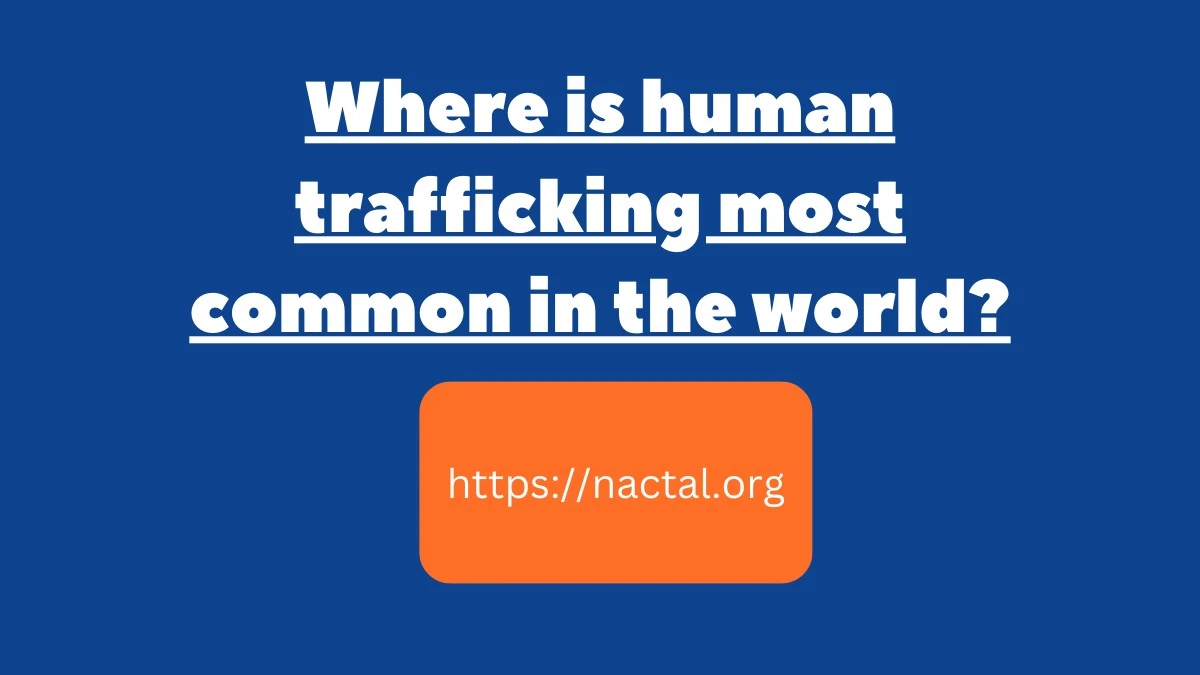Human trafficking is a global problem that can occur in almost every country in the world. However, its prevalence and forms can vary significantly by region and country. The United Nations Office on Drugs and Crime (UNODC) publishes a Global Report on Trafficking in Persons that provides data and insights into the prevalence and trends of human trafficking worldwide.
- Asia: Asia is a region where human trafficking is particularly prevalent. It includes countries like India, China, Thailand, Cambodia, and others where cases of trafficking for forced labor, sexual exploitation, and child labor have been reported.
- Africa: Human trafficking is also a significant concern in various African countries, with forms including forced labor, child trafficking for purposes such as child soldiering, and sexual exploitation.
- Eastern Europe: Eastern European countries, including Ukraine, Moldova, and Russia, have reported high instances of human trafficking, often involving the trafficking of women and girls for sexual exploitation.
- Latin America: Human trafficking is a problem in several Latin American countries, including Mexico, Brazil, and Colombia. It often involves forced labor, sexual exploitation, and child trafficking.
- Middle East: The Middle East is a region where both labor trafficking and sexual exploitation have been reported, often involving migrant workers and domestic workers.
- North America: In North America, the United States, Canada, and Mexico have all reported cases of human trafficking, with sex trafficking and labor trafficking being the primary forms.
- Europe: Human trafficking exists in various European countries, with sexual exploitation, forced labor, and child trafficking being common forms. Countries in Eastern Europe and the Balkans have reported higher incidences.
It’s important to note that these are general trends, and specific circumstances can vary widely within each region and country. Human trafficking can occur in urban and rural areas, and it often preys on vulnerable populations, including migrants, refugees, and those living in poverty. Additionally, efforts to combat human trafficking and data collection have improved over the years, which may influence the reported prevalence in different regions.
Efforts to combat human trafficking involve both prevention and prosecution. Many governments, international organizations, and NGOs work tirelessly to raise awareness, implement legal frameworks, and provide support to victims. Efforts are ongoing to eradicate this modern-day form of slavery and protect the rights and dignity of those vulnerable to exploitation.
FAQs
Q1: What is human trafficking, and why is it essential to know where it is most common?
A1: Human trafficking involves the recruitment, transportation, harboring, or receipt of individuals through force, fraud, or coercion for exploitation. Knowing where it is most common is crucial because it helps us understand the global scope of the issue and where efforts to combat trafficking should be prioritized.
Q2: Which regions or countries are highlighted as common areas for human trafficking in the blog?
A2: The blog mentions regions such as Asia, Africa, Eastern Europe, Latin America, the Middle East, North America, and Europe, where human trafficking is prevalent to varying degrees.
Q3: Are there specific countries mentioned as the worst offenders for human trafficking?
A3: The blog provides general information about regions where human trafficking is common. Specific countries may vary from year to year and depend on the types of trafficking and other factors.
Q4: What are the primary forms of human trafficking discussed in the blog for these common areas?
A4: The blog mentions forms of human trafficking such as sex trafficking, labor trafficking, child trafficking, and exploitation in various industries. It highlights the diverse nature of trafficking and how it manifests in different regions.
Q5: How do organizations and governments combat human trafficking in these common areas?
A5: Organizations and governments combat human trafficking through a combination of measures, including raising awareness, strengthening legal frameworks, supporting victims, prosecuting traffickers, and international cooperation.
Q6: Is human trafficking only a problem in developing countries?
A6: No, human trafficking exists in both developed and developing countries. It can take different forms and thrive in various contexts, making it a global issue.
Q7: How can individuals contribute to the fight against human trafficking?
A7: Individuals can contribute by raising awareness, supporting anti-trafficking organizations, reporting suspicious activities, advocating for stronger laws, and staying informed about human trafficking issues.
Q8: Are there international efforts to combat human trafficking mentioned in the blog?
A8: The blog highlights the importance of international cooperation and mentions efforts such as the United Nations Protocol to Prevent, Suppress, and Punish Trafficking in Persons, which provides a framework for combating trafficking globally.
Q9: Can you provide statistics on the prevalence of human trafficking in these common areas?
A9: Human trafficking statistics can vary and are subject to change over time. The most up-to-date and accurate statistics can be found in reports from organizations like the United Nations Office on Drugs and Crime (UNODC) and national anti-trafficking agencies.
Q10: What can readers do to stay informed about human trafficking and support efforts to combat it?
A10: Readers can stay informed by following reputable news sources, reading reports from anti-trafficking organizations, and participating in awareness campaigns. They can also support organizations working to combat human trafficking through donations or volunteering.
